Feeling ready to plunge into equestrian sports? Great news! And we’re here to help you make your first steps.
In fact, horse riding is quite a demanding activity that requires lots of practice and patience. But once you try horse riding, you will never regret your choice. People and horses have been interacting for thousands of years so far, taking part in farming, battles, competitions, showing, and others. Currently, the list of equestrian sports is expanding bringing new techniques and methods. Due to its diversity, everybody is able to find their passion according to their needs and willingness. So let’s have a look at the nitty-gritty of horse riding basics.
Horse Riding Styles
Before you sit in a saddle, you should choose a style of horse riding. There are two popular options – Western and English styles – which are extremely well-known all over the world. Which style to use is up to you but here are some aspects of why they differ.
- Western riding is highly popular in the USA. That is a common choice for rookie riders, particularly those who are into trail riding. The Western-style saddle features a deep-seated design to sit tight and comfy that is essential for beginners. Apart from leisure riding, equestrian activities such as roping, barrel racings, and shows are in demand as well.
- English style differs from Western in a saddle design that is flat-seated. This one is made for versatile eventing riding that requires lots of sudden and precise movements. The most popular equestrian activities are hunting, jumping, hacking, and dressage.
To find out more about Western and English styles, check out our article on how to saddle a horse.
Time to Get on a Horse
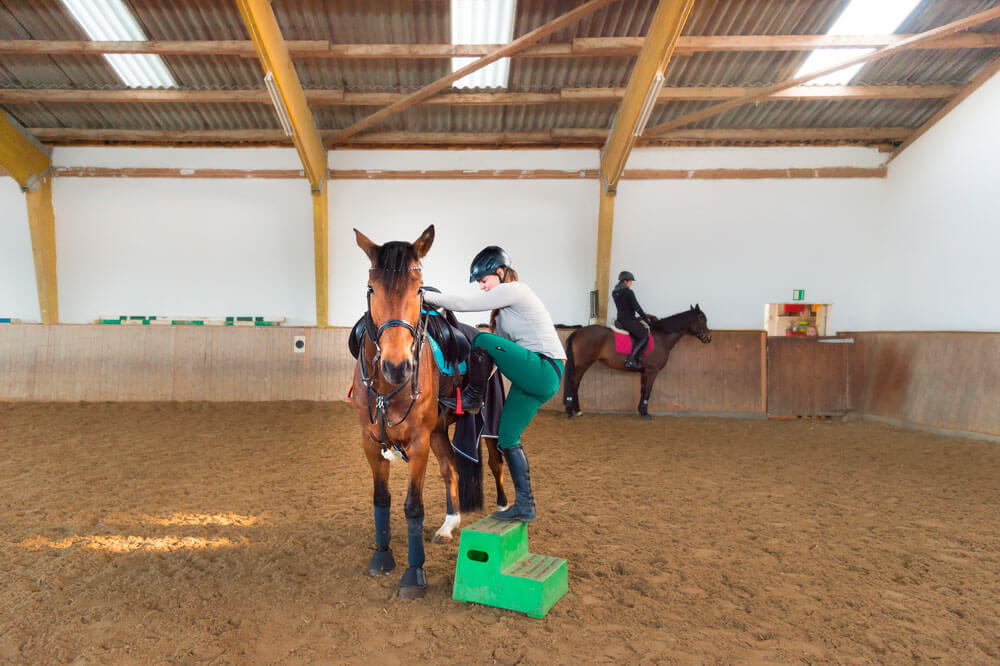
After you tack up your horse and put on safety equipment, you’re ready for mounting a companion. At first glance, the process of getting on a horse may seem challenging but the truth is that it’s super easy if you know what you’re doing. Nevertheless, there are some aspects that should be considered before you mount a horse.
First, you have to check the horse’s tack gear, if everything is set properly. Like a driver checks the car before their first race, the same goes for a riding companion. Both of you must feel comfy during the ride to improve your productivity and avoid further health issues that might happen in case of unreliable gear.
That’s why it’s highly recommended to check all the buckles so they are properly fastened and do not wobble. Examine the girth (cinch) that is attached to the saddle underneath. It should be fastened tight and help avoid the saddle slipping off. The horse saddle pad is usually tacked under the saddle which also improves the grip. Ideally, the horse equipment should be double-checked to be totally sure.
Next, when mounting a horse, be sure that there’s enough space for you to lift your leg up securely so you do not harm yourself. That’s why it’s better to get on a horse in an open area. In addition, this spot should be comfortable for the horse too, so he could stay calm and still. If you feel insecure getting on from the ground, there are special mounting platforms that help the horseman to mount conveniently. And one more important thing to keep in mind while mounting, the horse should be bridled and you have to hold the reins while you get on up for safety reasons.
As we already mentioned, there are two different types of horse riding, Western and English, that’s why the process of mounting varies a bit according to the different styles of the saddles. Here’s a step-by-step guide on how to duly get on a horse which is described in two different styles.
Mounting in a Western Saddle
- Find a safe spot where you can easily get on a horse. If you need a little lift, grab a mounting platform. If you don’t have any, you can use any solid objects that surround you like hills, rocks, posts, or others. Just make sure first it’s sturdy and does not slip off.
- Stand by the left side of the horse and turn so you face the horse’s tail (so you look at the opposite directions with your companion). Now your left shoulder is next to the horse’s left shoulder. When doing this, don’t forget to hold the reins in your left hand. And using the same left hand, grab the saddle horn and get ready for mounting.
- As your right hand is free, use it to take the stirrup (iron) and turn it so the pad is faced to you horizontally. Put your left foot on the stirrup pad.
- And now it’s time to lift up! Help yourself with a stirrup using your right hand. Push off with your right foot and lift it up over the horse’s back not touching it and sit down on a saddle smoothly.
- Put the right foot on the saddle pad as well. Check the reins and the saddle again, if everything is still on its place. And voila, you did it!
Mounting in an English Saddle
- Find a safe spot where you can easily get on a horse. If you need a little lift, grab a mounting platform. If you don’t have any, you can use any solid objects that surround you like hills, rocks, posts, or others. Just make sure first it’s sturdy and does not slip off.
- Stand by the left side of the horse and turn so you face the horse’s side as you likely stand on a mounting block. When doing this, don’t forget to hold the reins in your left hand. And using the same left hand, grab a little of mane at the bottom of the horse’s neck (as Engish saddles have no horns to hold).
- As your right hand is free, use it to take the stirrup (iron) and turn it so the pad is faced to you horizontally. Put your left foot on the stirrup pad.
- And now it’s time to lift up! Grab the cantle using your right hand. Push off with your right foot and lift it up over the horse’s back not touching it and sit down on a saddle smoothly.
- Put the right foot on the saddle pad as well. Check the reins and the saddle again, if everything is still on its place. And voila, you did it!
Time to Get Down

Dismounting from a Western Saddle
- Find a safe place to get off and stop your companion.
- And now the process is quite the opposite. Start with your right foot and take it off the stirrup pad. Don’t forget to hold your reins in your left hand when you start dismounting. Grab the saddle horn with your left hand as well and get ready for dismounting.
- Lift up your right leg and move it over the horse’s back not touching the horse. While doing this, grab the cantle with your right hand and the pommel with your left hand. Still hold the reins.
- Start turning your body so it’s faced to the left side of the horse. Your right leg starts getting down and is on the same level as the left leg.
- Get off on the ground with both feet smoothly. And voila, you did it!
Dismounting from an English Saddle
- Find a safe place to get off and stop your companion.
- And now the process is quite the opposite. Start with your right foot and take it off the iron pad. Don’t forget to hold your reins in your left hand when you start dismounting. Grab a little of the horse’s mane at the bottom of the horse’s neck with your left hand as well and get ready for dismounting. Move your right hand to the pommel of the saddle.
- Lift up your right leg and move it over the horse’s back not touching the horse. While doing this, grab the pommel with your left hand. Still hold the reins.
- Start turning your body so it’s faced to the left side of the horse. Your right leg starts getting down and is on the same level as the left leg.
- Take your left foot from the pad so your legs are free and slide down on the ground with both feet smoothly. And voila, you did it!
Gaits of a Horse

There are various patterns of movement of a horse that is called gaits. Typically, these gaits are divided into two groups – natural and ambling gaits – according to whether the moves are obtained with no training and those which are a response to a trainer’s command.
Natural Gaits
The natural group of gaits consists of the walk, the jog (trot), the lope (canter), and the gallop. All of them differ in speed pace and are common to most horse breeds.
- The walk is the slowest one, it’s a four-beat gait that moves in a 1-2-3-4 way so the hooves touch the ground one after another. The average speed is 3-4 mph.
- The jog (Western) or the trot (English) is a two-beat gait when a horse moves his legs in a diagonal way. So when one pair of hooves are on the ground, the second pair is lifted diagonally. The average speed is 7-10 mph.
- The lope (Western) or the canter (English) is a three-beat gait that is a bit faster than the jog but not so fast as the gallop. The horse moves in a 1-2-3 way, then a short pause and 1-2-3 sound comes again, and so on. Such triple-sound appears as a result of moving one leg separately, then 2 diagonal legs simultaneously and another leg separately. The average speed is 10-17 mph.
- The gallop is the fastest from the natural gaits which is four-beat. It is similar to the lope but is pretty much faster. This style is an expert material so don’t expect to obtain this skill right away you sit in a saddle. The average speed is 30-40 mph.
Ambling Gaits
Ambling gaits are deemed as artificial gaits that could be acquired after training. But there are some breeds of horses that get these gaits in a natural way. For example, the American Saddlebred horse is claimed as a five-gaited horse breed performing the walk, the trot, the canter, the rack, and the slow gait.
Here are some kinds of ambling gaits.
- The slow gait is a four-beat gait that includes the stepping pace and the single foot styles. It features a lateral movement when a horse lifts two legs from the same side but they touch the ground at a different pace.
- The rack is also a lateral gait that is four-beat but is quite faster. It features equal pauses between the beats when the hooves touch the ground.
- The pace is another lateral gait that is pretty fast. The style is two-beat when a horse lifts two legs from the same side and puts them down on the ground simultaneously.
- The running walk is a four-beat lateral gait that is quite faster than the regular walk. It features smooth movements as the hind legs overstep the front legs so there’s a slight gliding feeling during the ride. As well as the rider moves back and forth a bit sitting in a saddle.
How to Ride a Gaited Horse
When your horse is tacked up and equipment is set, you’re ready to go. Everything should seem comfortable for both the rider and the horse. Sit gently in a saddle and relax so your companion could feel calm too. You should sit deeply enough so there is no space between your lower back and the saddle’s cantle. Watch your back so you sit straight as well. As gaited horses ride very smoothly, you won’t almost change your sitting position and enjoy the riding.
To perform the gaits properly you have to constantly communicate with your companion so as to control his movements. That’s why you need to hold the reins all the time. And not just hold them in hands but slightly pull them on the horse but not too much. All come with experience. As to your hands, they should rest on the horse’s withers. If you’re a Western-style equestrian, there’s a horn at the front of the saddle you can hold to provide a more convenient and safe ride.
In addition, you should watch your lower body position as well which is also essential for controlling the horse. Place your legs on both sides of the horse gently with no excessive pressure. Put your feet into the stirrups, so the toe box touches the pads and the heel goes down. If the legs are placed behind the girth, everything is set well. Moreover, before you start riding, don’t forget to adjust the length of the stirrups according to the type of equestrian activity you are going to perform.
So the main point is to be calm and relaxed so you can enjoy a smooth ride with your companion. When you find the perfect balance, you will plunge into equestrianism deeply with no regret.
Types of Equestrian Sports
Currently, there are dozens of horse riding activities presented so the list of them might be endless. So here are some popular equestrian sports that you may be interested in.
Barrel Racing

Barrel Racing is a popular Western rodeo event that is highly spectacular and intense. The main idea is to maneuver between the obstacles and leave the arena in the fastest time. So there are typically three water barrels that are placed in a triangular shape in the middle of the arena. The rider and his horse have to rush in a cloverleaf pattern between the barrels not touching and ignoring them. That is quite a dangerous activity as there are lots of rapid and sudden moves. So both the horsemen and the horse should be well-trained and determined.
Dressage
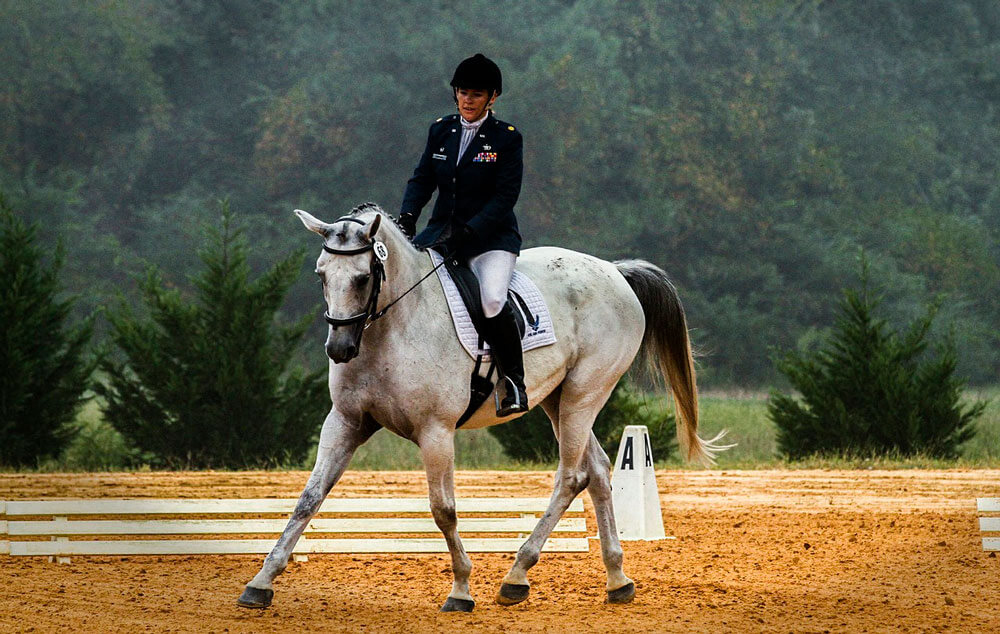
Dressage is a well-known equestrian activity among experts from all over the world. During the competition, the skills on how well the horse is trained are shown as well as the rider’s coherent work is judged. So smooth movements, balance work, and grace are taken into account. There are about five levels of difficulty to test the moves of participants that include a wide range of actions. And every time a well-experienced horse rider has to show a harmonious bound with his companion, controlling the horse with gentle signals. This requires a lot of work on your body and mind so your moves seem to be almost effortless.
Eventing

Eventing or horse trials is a worldwide event that takes place to show horse riding skills in different activities. Originally, such an event takes three days to take part in three disciplines such as dressage, cross-country, and show jumping. Nowadays, horse trials may be held from one day to four days, mixing or splitting the disciplines respectively.
First comes dressage that requires both the rider and the horse to perform smooth, precise, and graceful movements. Then goes cross-country, where the horseman and his companion have to balance perfectly and trust each other. The aim is to show great endurance and pace while jumping over obstacles of different heights and lengths. The next stage is show jumping where the competitors have to deal with the jumping obstacles and the time is limited. Typically the fences have different heights and are set in a variety of directions.
Pleasure Driving
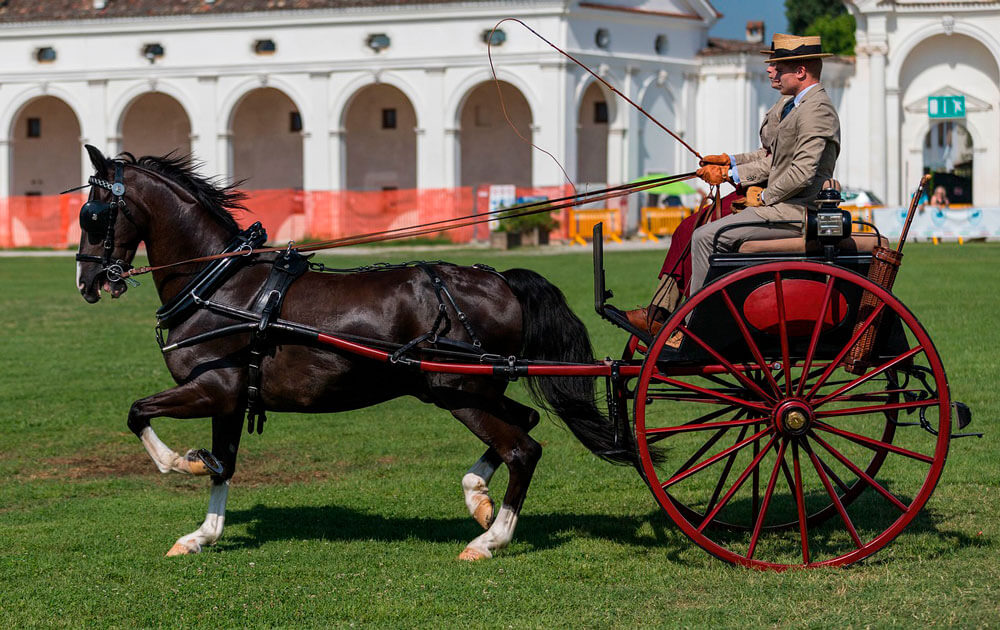
Pleasure driving is a classy horse show that is well-known particularly in the United States. The idea is to drive a carriage with a help of a horse or a pony hitched to the cart. The main difference is that the horseman doesn’t sit in a saddle, he’s placed in the carriage behind the horse. The cart may have a two-wheeled or a four-wheeled design. The horse shows the walking gait, the trot, and the strong trot. Lots of aspects are judged in pleasure driving like great performance, graceful moves, appealing conformation, and many others.
Schooling Shows

Schooling shows or training can be a wonderful option for new riders who want to take part in their first competition. The riders and their horses are judged in a light-hearted way among the peers so you can feel comfortable and confident. That’s a great opportunity to find new like-minded people and go on discovering equestrianism together. There is an array of types of schooling shows that are suitable for Western and English classes. For example, in a trail obstacle event, skills of dealing with getting over different safe obstacles are assessed. And during the equitation, the rider is mostly judged by their manner of body positioning and balance at the different horse gaits.
Trail Riding
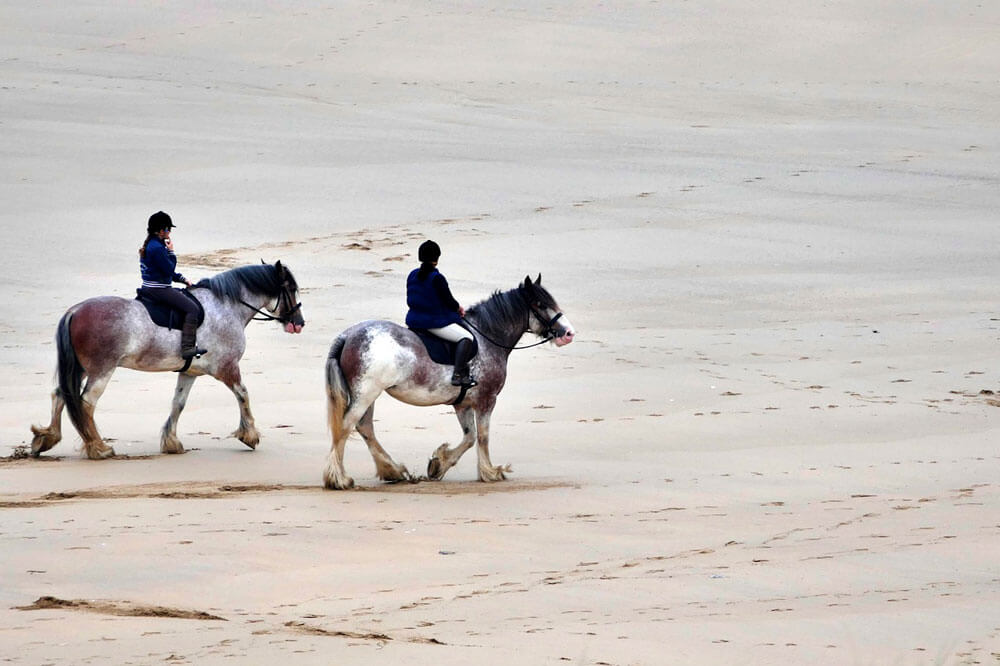
Trail riding or hacking is a great option for beginners, usually, it’s a non-competition activity. The style of trail riding could vary depending on the length of the ride and the area where it takes place. Typically the riders choose open-air long spacious to enjoy their horses for long with no time limits. Before you hit the trails, it’s essential to pick a horse that is suitable for such activity and does not bring you troubles. As the ride could be time-consuming, you’re likely to get off the saddle sometimes to have a rest, stretch, or have a bite. That’s why the horse should stay calm and behave himself while you’re out.
Final Thoughts
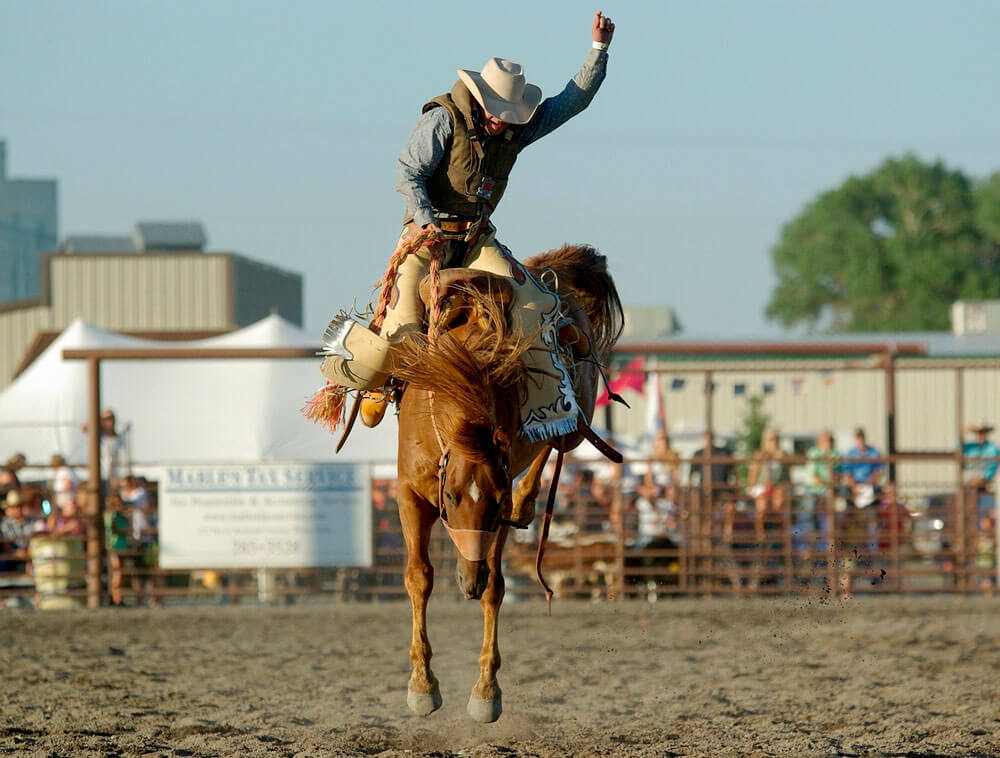
Horse riding is a fascinating activity that people are keen on all over the world. Equestrianism is improving all the time bringing new activities and techniques. Dozens of people claim that bonding with the horse is an extremely exciting pastime that will definitely stir up brand new emotions and feelings. But always remember some important things about horses.
If you’re also craving for taking up horse riding we’re here to help you step in confidently. This article describes horse riding basics, in particular, how to get on/off the horse, how to get on with a gaited horse, and which equestrian activities you’re able to try. Since you vault into equestrianism, don’t step back and move forward to attain the desired objectives. Good luck!
